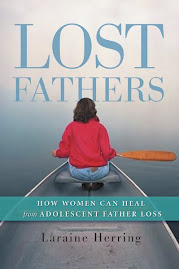Our house, July 2008
**The essence of this essay is true. The spatial details within the house have been rearranged.
Our house had not caught fire as I’d feared as a girl after watching the Walton’s house burn on TV, and then watching my father place his lit cigarette on the edge of the windowsill so he could kiss me good night. The house had not fallen to disrepair, as others on the street had, like the burnt yellow split level where my best friend had lived, or the one across the street, still the same chartreuse it was in 1980 where the cute bad boy with the long hair had worked on his black Mustang late into the night. The front door to our house had been repainted the same chalky red it had been when we lived here. My father had wanted to paint the house himself in 1977 because all strong Southern men could paint – should paint – their own houses. But he couldn’t. Or at least didn’t. The eaves were too high, his polio withered leg too weak, the fingerprints from his most recent heart attack tracked in blue across his chest.
“We’ll hire someone,” my mother said, and we did, and the eaves were painted the chalky red color we had hoped would symbolize vitality, a quality we no longer felt we had.
My father watched the young painters, flecks of dried red paint in their light hair, from the den as the Sunday afternoon golf matches droned underneath his thoughts. My mother worked on the lesson for her Sunday school class on the Remington typewriter that had both a red and black ribbon option, but no correction tape. Ben Hogan held the leader board for the day, but my father was not watching, not listening. He was watching the men – the boys really – with their strong legs and their strong hearts paint the ceiling of his family’s home. He was, perhaps, tracing the blue path across his chest with the fingers of his right hand while his atrophied left foot hung in his specially designed shoe. He was watching his children, who, for the moment at least, were not fighting. They were in the backyard also watching the young men who were painting the house. He might have wondered if his daughters wished for a father who could paint houses, or throw a baseball, or run behind a bicycle. His daughters wondered what the were having for dinner, hoping for spaghetti, expecting cube steak and string beans cold from the can.
When I walked up the driveway again at forty years old, two young men were still repainting the eaves. This time different men and a different color, though the spackles of thirty-year-old chalky red paint still dotted the brick side stairs.
“Do you want to come in?” they asked, and I had almost forgotten the need for permission to enter. It was, after all, my house.
Inside, the golf match wasn’t on. Ben Hogan wasn’t winning. My father was not sitting, not thinking, but the walls were exploding through the neutral beige and Navajo white they’d been painted to ensure a quick sale. The walls pointed to the windowsill of my girlhood bedroom where I feared the impending house fire would begin, where I feared the monster that took my father away one night and brought back an aged man, a graying, frightened, subdued man. This monster, the same monster that ate the other half of the pair of red mittens that always make it to school but never home, lived under every bed skirt, behind every closet door, inside the pockets of every winter coat.
The floor plan has been opened up. A wall knocked down to make a great room, ceilings depopcorned and raised, fans added and appliances updated. My room, however, was significantly smaller than it used to be; the closet wouldn’t hold a fraction of my current wardrobe. But the dead fly was still etched into the paint on the window frame of my bedroom, wings splayed open like a prehistoric fossil. As a child, I would run my fingertip over the outline of its wings, imagine how it died, drowning in beige paint, slowly realizing it was trapped. No matter how hard it tried to move it would never be anywhere but on this windowsill in this bedroom.
Outside the window was the orange fence, still standing after almost thirty years. The woman, hands on blue-flowered hips, watched me. Her hair had grayed, but I would have known her anywhere.
“I know the story of that fence,” I said to the two men with young bodies and strong hearts who were fixing up our house to resell. “When we moved to Arizona, we sold our house to a black couple. When we told our neighbor, the next day they built the fence. They stopped talking to us.”
The young men, young in the south of 2008, not the south of 1980, or the south of 1940, stopped installing the kitchen sink.
“They saved my dad’s life, you know,” I continued, even though these young Southern men were surely demonstrating ancient Southern politeness. “Her husband performed CPR while the ambulance was on the way.”
The woman hadn’t moved from her driveway.
“Looks like she’s alone now.”
“Her husband died a few years back,” said one of the young men.
This woman, older than my mother, was frail enough that I could push her to the ground while my young self shouted at her all the things she’d always wanted to:
You betrayed us!
You abandoned us!
You gave me a New Testament for my birthday and then built this fence!
I am glad you are alone! I am glad! I am glad!
You abandoned us!
You gave me a New Testament for my birthday and then built this fence!
I am glad you are alone! I am glad! I am glad!
But I didn’t say any of that. I have driven here in a red convertible rented car. I will drive away in less than an hour. I can no longer hear the golf match, the Remington’s keys, my friends playing kickball in the yard across the street, my father’s limp left foot tapping the floor. She is standing still, wearing a blue flowered housecoat and pink slippers, and I am glad.
I press my fingers one more time against the fly’s immutable skeleton. “Well, it’s sure been a long time.”
The young men, boys really, with their strong legs and strong hearts, nod to me. The house is so small now, it seems impossible it once held us all – mommy, daddy, sisters, and monster. I have grown through it and around it, my own strong heart, strong legs inching into the eaves, making sure the chalky red paint, the orange fence, the woman in the blue flowered housecoat, the ancient fly, do not dissolve into the same places as Ben Hogan’s win, my father’s blue-black scar, and the girl I used to be.
This is the fence now. It was orange when we moved in 1981.

This is the side of the house where there are still spackles of red paint.

This is where the fly is embedded in the window sill.












